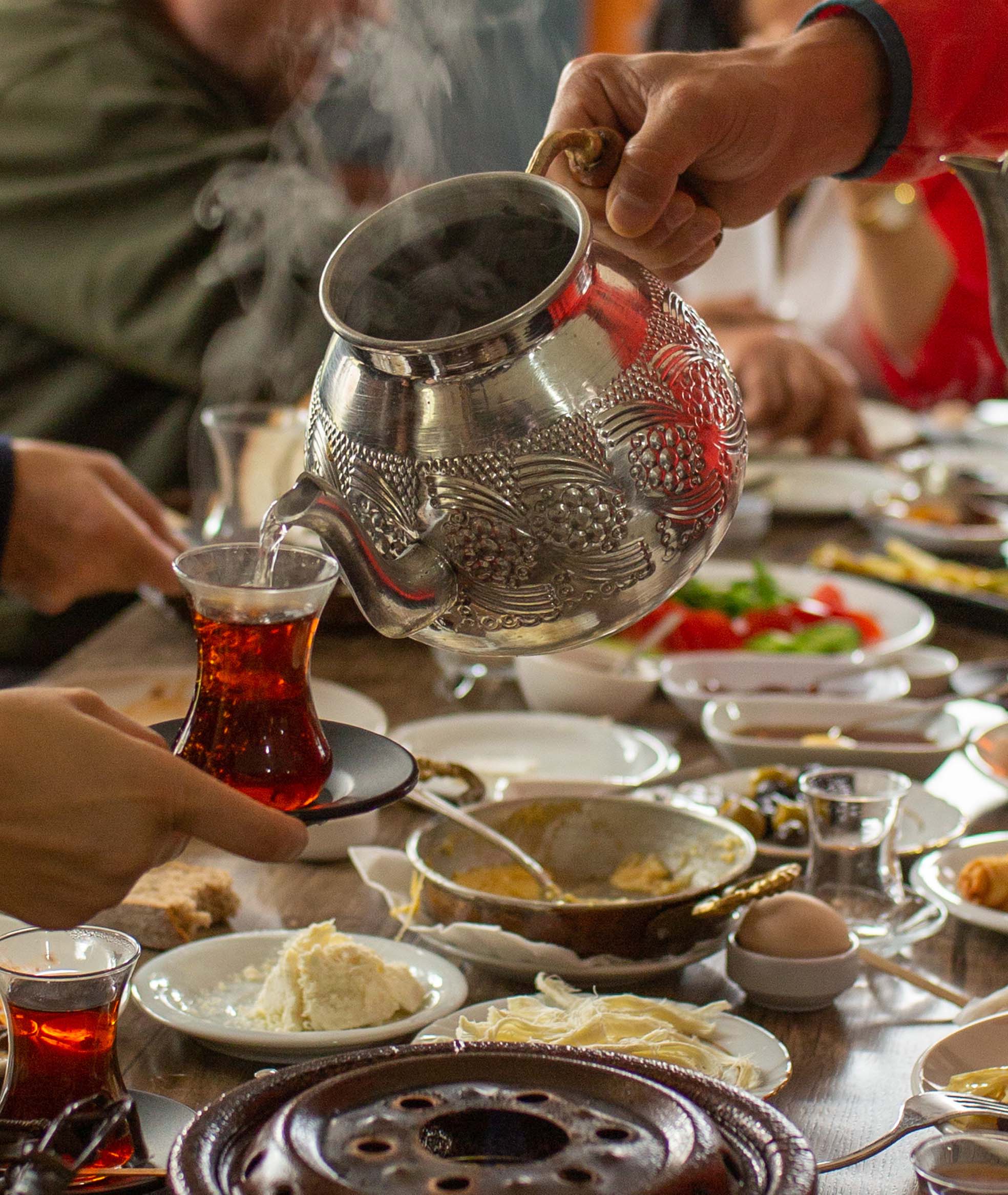
Turkish Tea vs. English Tea: A Tale of Two Traditions
Turkish Tea vs. English Tea: A Tale of Two Traditions
Tea is more than a beverage — it’s a way of life. Across the world, tea brings comfort, connection, and a touch of daily ritual. Two of the most beloved tea cultures, Turkish and English, each tell their own unique story — shaped by history, geography, and the people who keep the tradition alive.
Origins and Heritage
Turkish Tea: A Deep-Rooted Ritual
Turkish tea culture has its roots in the 19th century, gaining popularity as a more affordable alternative to coffee. Over time, it became a daily essential in Turkish homes, tea gardens, and workplaces. Today, it's hard to imagine a day in Turkey without a few cups of tea.
Brewed in a special double teapot called a çaydanlık and served in small tulip-shaped glasses, Turkish tea is strong, vibrant, and full of flavor. More than that, it’s a symbol of warmth and hospitality — guests are often welcomed with a fresh glass of tea, no questions asked.
English Tea: A Refined Tradition Since the 1600s
Tea arrived in England in the 17th century and quickly became a staple among the British elite. By the 19th century, “afternoon tea” had become a cherished ritual — a moment of calm, usually shared with friends, scones, and small sandwiches.
Classic English blends like Earl Grey and English Breakfast offer smooth, balanced flavors that pair beautifully with milk. Whether served in a grand hotel or a cozy kitchen, English tea evokes calm, comfort, and timeless charm.
The Brewing Style
Turkish Tea: Strong and Adjustable
Brewing Turkish tea is almost meditative. The concentrated tea brews in the upper pot, while water boils below. You mix the two when serving — stronger (koyu) or lighter (açık), depending on your taste. It’s a process that invites patience and connection.
English Tea: Simple Yet Elegant
English tea is brewed more simply — just one teapot and a few minutes of steeping. Loose leaves or tea bags, milk or sugar — the ritual is easy but never rushed. It’s a pause in the day that adds a gentle touch of grace.
Taste and Aroma
Turkish Tea: Bold and Full-Bodied
Made from small-leaf black tea grown in the Black Sea region, Turkish tea has a rich, slightly bitter taste and a deep amber color. It’s often served with sugar cubes — but never with milk. The aroma is intense and inviting.
English Tea: Smooth and Mellow
English teas tend to be smoother and softer. Earl Grey’s citrusy notes and English Breakfast’s malty flavor make them ideal for sipping slowly, with milk, biscuits, or a quiet book.
Serving and Social Meaning
Turkish Style: Generosity in a Glass
In Turkey, tea is served in rounds — one glass rarely stands alone. Refill? Always. It’s not just about taste; it’s about making people feel welcome and cared for.
English Style: Grace on a Tray
Afternoon tea brings out fine china, porcelain teapots, and polished manners. Even the quietest moment with a cup feels special — a little ceremony in the everyday.
Which One to Choose? Why Not Both?
Whether you're drawn to Turkish tea's bold spirit and social warmth or the calm, refined ritual of English tea, there's beauty in both. At Lazika, we honor every cup — because every tea tells a story.



Leave a comment
This site is protected by hCaptcha and the hCaptcha Privacy Policy and Terms of Service apply.